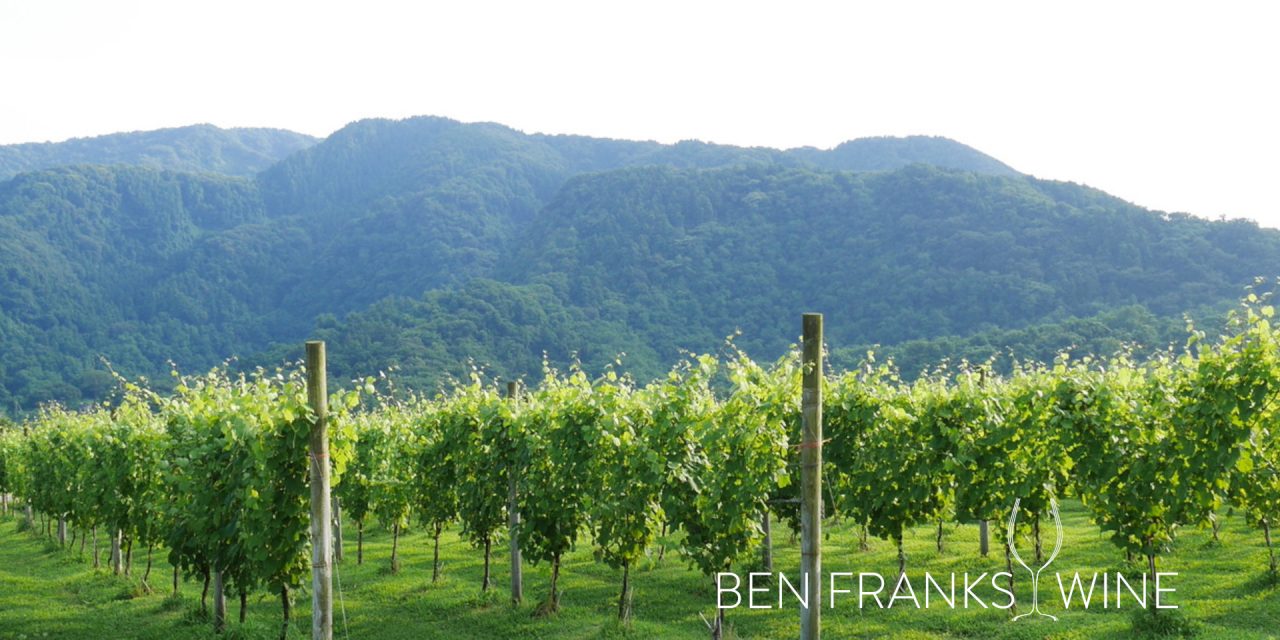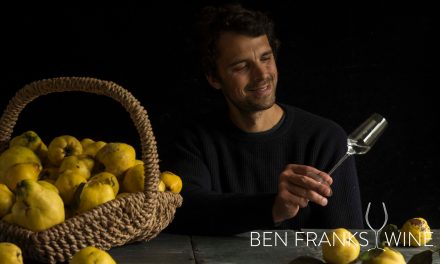Following a recent trip to Japan, Oliver Coleman discovered the stunning wines of the Niigata Wine Coast in the north-west. For his latest article for BFW, Oliver explores the sandy and volcanic terroir, a new face of Albariño, and how these small wineries can build a name in the global wine market.
Featured image: View across Cave d’Occi’s Albariño vineyards towards Mt. Kakuda.
The half-an-hour journey south from Niigata City on Japan’s north-west coast does not immediately scream wine country: neatly piled ziggurats of sand towering next to the road, interspersed with sandy plots growing enormous watermelons and with the windswept beach merely metres away. Nevertheless, this is home to a suitably intrepid cluster of winemakers who, together, make up the ‘Niigata Wine Coast’.
At first glance, this region – a two-hour bullet-train ride from Tokyo – seems to be something of an outlier. There are, at present, only five producers toiling away in a place that before the 1990s had no history of winemaking. Anyone familiar with Japanese wines may know that the heartland of Japan’s modest wine production for over a century has been Yamanashi prefecture, where producers have built a reputation for wines made with Japan’s indigenous variety, the pink-skinned Kōshū.
And yet, there seems to be a burgeoning wine revolution occurring in Japan, much of it driven by adventurous boutique producers in entirely new regions, such as Niigata, Nagano, Yamagata and Hokkaido. There has, in fact, been a threefold increase in the number of wineries in just the last decade. These new-wave winemakers are exploring unique terroirs, pioneering new grape varieties and experimenting with all sorts of vinification techniques. The three wineries I visited in Niigata (Fermier, Le Cinq, and Cave d’Occi) are most certainly part of this vanguard and their wines indicated a very bright future for Japanese wine.
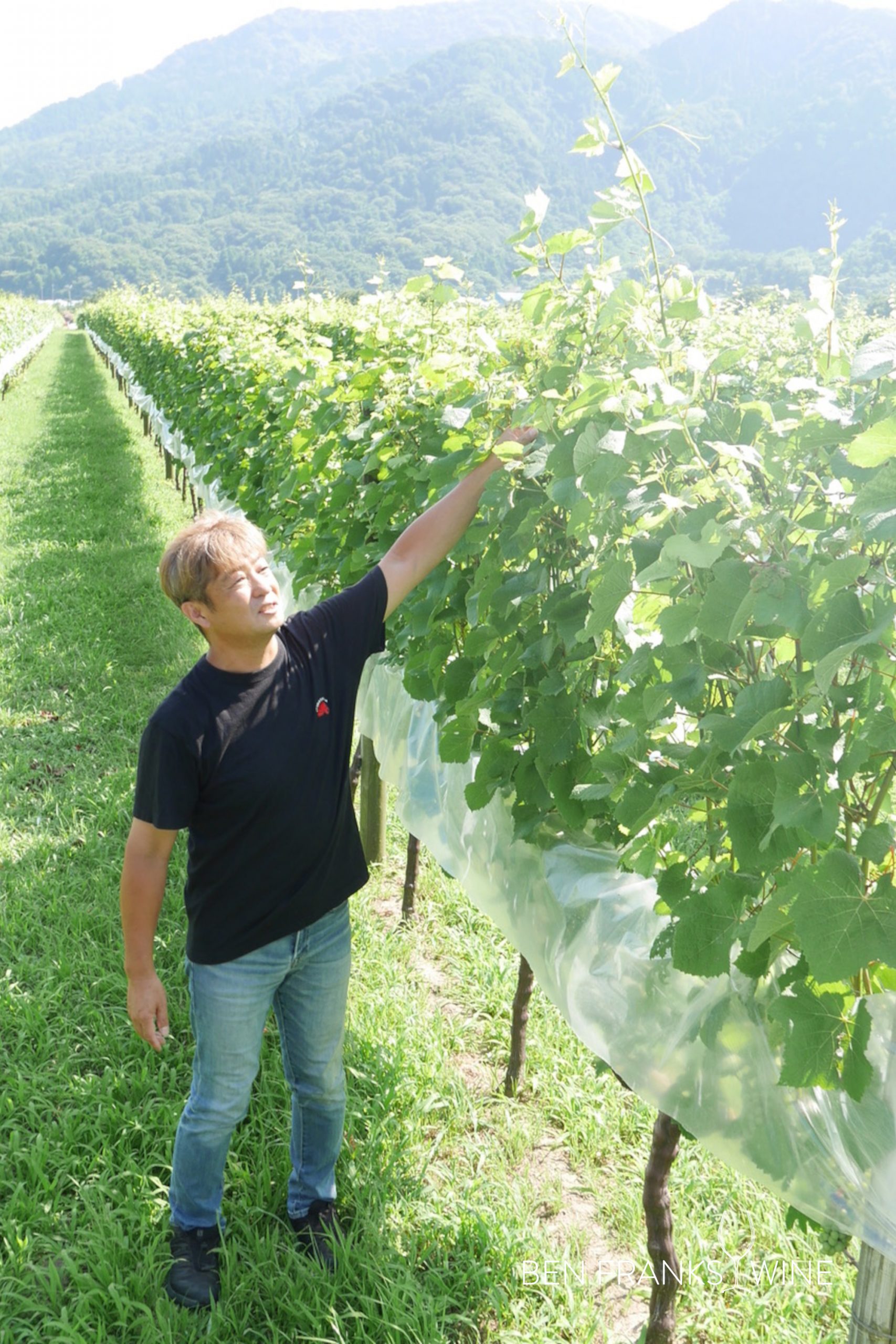
Fermier’s Honda Takashi among his Pinot Noir vines
Niigata, via Rias Baixas
Despite lying in the latitudinal sweet spot for quality grape production, Japan is not an easy place for successful viticulture. Humid summers characterised by long bouts of rain are a boon for fungal diseases of all kinds, while the typhoons which batter the archipelago just in time for harvest are another serious headache. In short, it takes dedication and stubbornness to be a grape grower there.
If these damp maritime growing conditions put you in mind of places such as Spain’s Atlantic-influenced Galicia, then you’d be right, for Niigata Wine Coast is the pioneering home of Albariño in Japan. The Galician grape, which has enjoyed a stellar rise in popularity globally, is ideally suited to these humid conditions with its thick skins and good disease resistance.
Moreover, Niigata’s proximity to the sea and the constant saline winds provide another similarity with Rias Baixas. Cave d’Occi, which was the first winery to set up in the area 30 years ago and is by far the biggest producer, has dedicated nearly a quarter of its 9 hectares to Albariño. The exuberant head winemaker at Cave d’Occi, Fumito Kakegawa, believes it is this grape that puts Niigata wine on the map and the success of Niigata Albariño has resulted in other Japanese regions planting the variety.
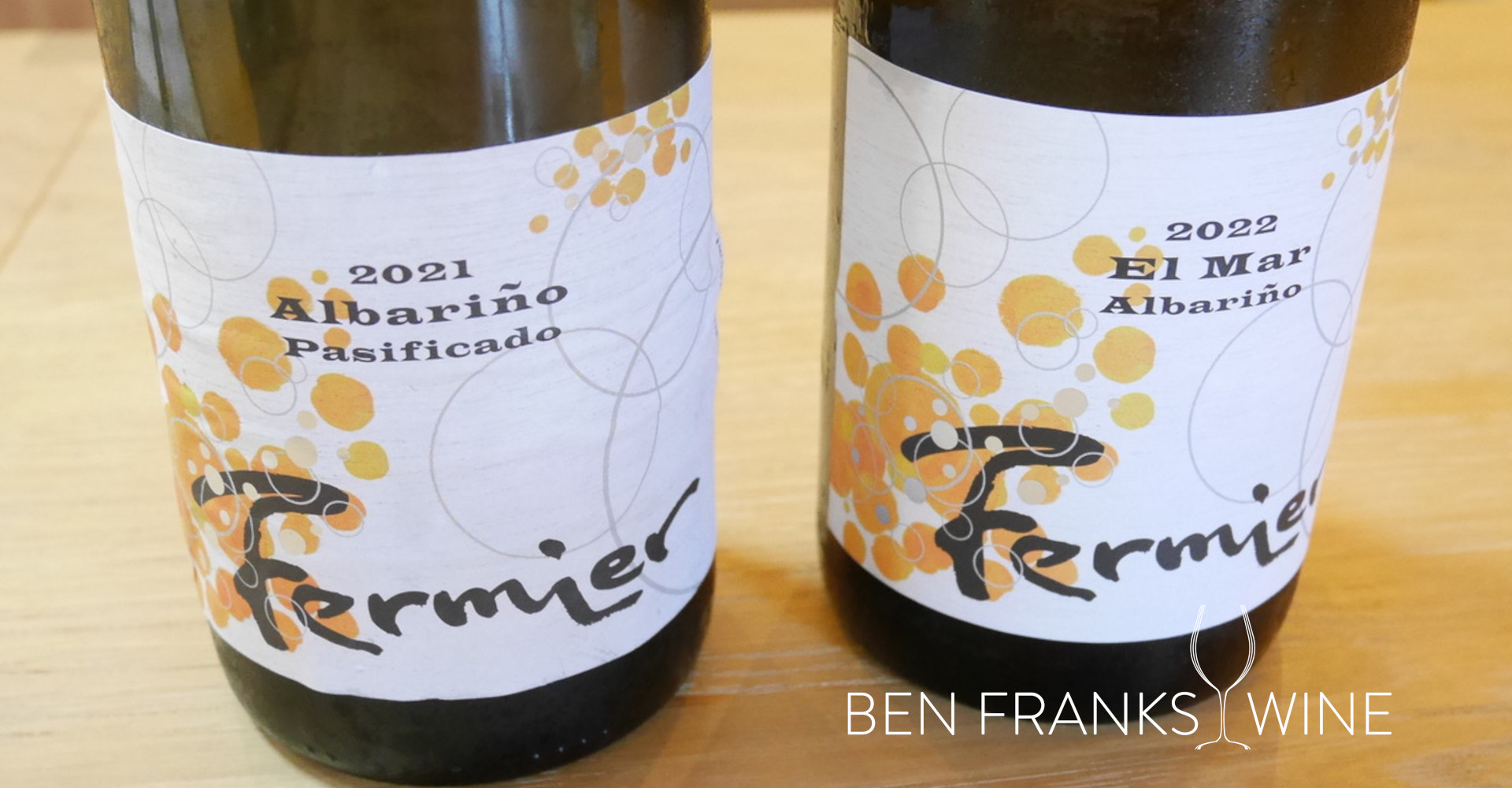
Fermier’s Albariño cuvées
He’s not wrong about the success; the wines themselves are quite stunning. Meanwhile, a few hundred metres away at Fermier, Takashi Honda is exploring the grape from every angle. As we raced around the vineyards in the back of his pick-up truck, he explained that he uses different trellising techniques depending on the topography and terroir – VSP on the flattest, sandiest places, and terraced pergolas on the steeper sites (reminiscent of the systems used in Rias Baixas). In the winery, Honda-san crafts six different cuvées from his Albariño vines. From his benchmark ‘El Mar’ bottling, which shows the incredible quality of his fruit through stainless-steel vinification, via a barrique-aged version and, finally, an exceptionally rich, complex cuvée made with 60% air-dried Albariño grapes (a nod to Martin Codax’s part-botrytised Gallaecia, perhaps).
But the area’s winemakers are not betting the house on Albariño; there is far more going on here. A stone’s throw from Fermier is Le Cinq, which was established by Takashi Abe a mere eight years ago after he honed his craft at Cave d’Occi’s oenology programme. Abe-san has taken his love for Burgundian grapes and given them a unique spin. From his own parcel of vines, he makes a co-fermented Chardonnay/Pinot Noir blend, reminiscent of a Portuguese palhete – a fantastic gourmet rosé. Alongside this, with bought-in fruit, he makes a delicious summery blend of the same grapes (fermented separately) in a clarete style. He is keen to create elegant styles that focus on fruit, something he achieves with distinction.
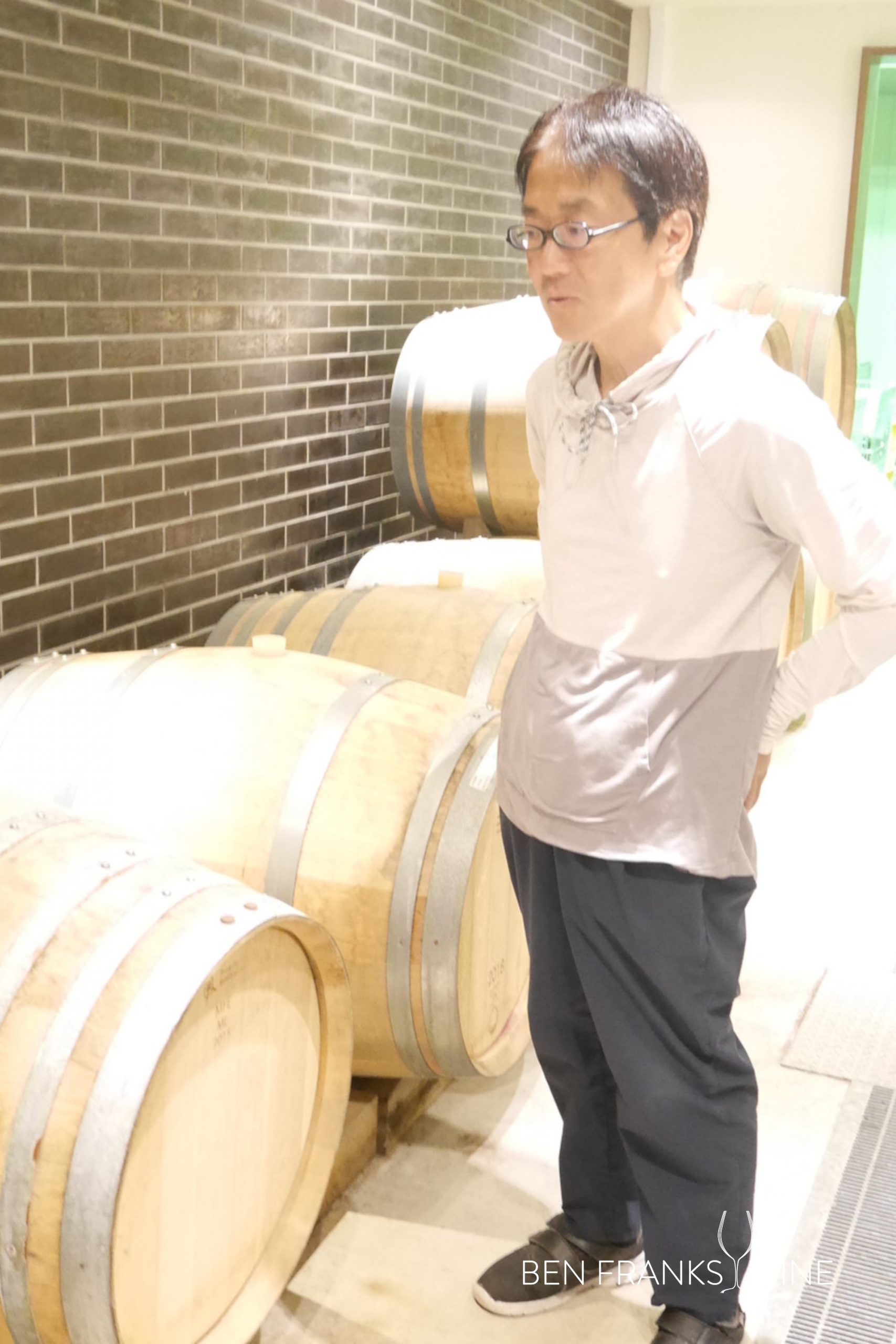
Le Cinq’s Takashi Abe and his Burgundy pièces
Back at Fermier, Honda-san brings his remarkable focus and dedication to an incredibly ethereal, hauntingly scented Pinot Noir (from Dijon clones), and a Cabernet Franc that transported me to Chinon. A further string to his bow may come with his newly planted Petit Verdot; Honda-san reckons that in the warming climate this late-ripening variety could have a strong future there.
As the longest-established winery, Cave d’Occi is the engine of experimentation in Niigata. They currently have 18 different varieties planted, including Nebbiolo, Barbera, Semillon and Sauvignon Blanc. Most intriguingly, Kakegawa-san was keen to point out that they have been the first to plant Petit Manseng (of Jurançon fame) in Japan; he believes that the grape’s disease-resistance and affinity for sandy soils make it an ideal fit – watch this space!

Sandy soils in the Cave d’Occi vineyard
Sand, sand and more sand…
It is not only the grape varieties that make Niigata Wine Coast unusual; those pyramids of sand piled beside the road point to the other special thing about this place: the soil. Or, rather, the lack thereof. Because the vines here are planted into sand. As Honda-san explained, the confluence of two rivers and the ocean creates what is essentially a large sand-dune-like area. The pyramids are piled up by diggers from the enormous amount of excess sand that gathers each year. Deep below this layer of sand is a volcanic bedrock, from the dormant Mt Kakuda, which looms over the vineyards.
This sandy-volcanic combination is, according to Kakegawa-san, unique among Japan’s wine-growing regions – and it is certainly not just an incidental part of the area’s story. All the winemakers were emphatic that the sand imparts a unique minerality to their wines. I can certainly vouch for this character in every wine I tasted, with the Albariños, in particular, displaying a distinctive salty-mineral backbone; though no doubt the saline ocean breezes are a factor, too. Whatever the cause, there’s no doubt that this – a clear terroir-driven imprint – is what every winemaking region desires, and Niigata Wine Coast seems to have it.
Much is made of the difficulty of growing successful wine grapes in Japan, and the Niigata coast is no exception. The vignerons must expend remarkable efforts to produce high-quality fruit. But in terms of viticulture, this coastal site has its benefits. Abe-san explained that, while humidity levels still create disease pressures, the strong ocean breezes in the morning and evening have a remarkable ameliorating effect. Nevertheless, the winds are sometimes so strong that they can destroy trellising systems and knock bunches off the vine. Indeed, Honda-san’s precious Pinot Noir grapes are covered with an opaque sheeting to prevent wind and sun damage.
The sandy soils, on the one hand, do prevent waterlogging during the frequent heavy rainstorms that batter Japan in the summer. The drawback of the sand, however, is the paucity of nutrition. Kakegawa-san told me that the ubiquitous cover-crop between the rows of vines is not a nod to current viticultural fashion but help add much-needed nutrition to the soil; it also, apparently, prevents the sand from taking over the vineyard.
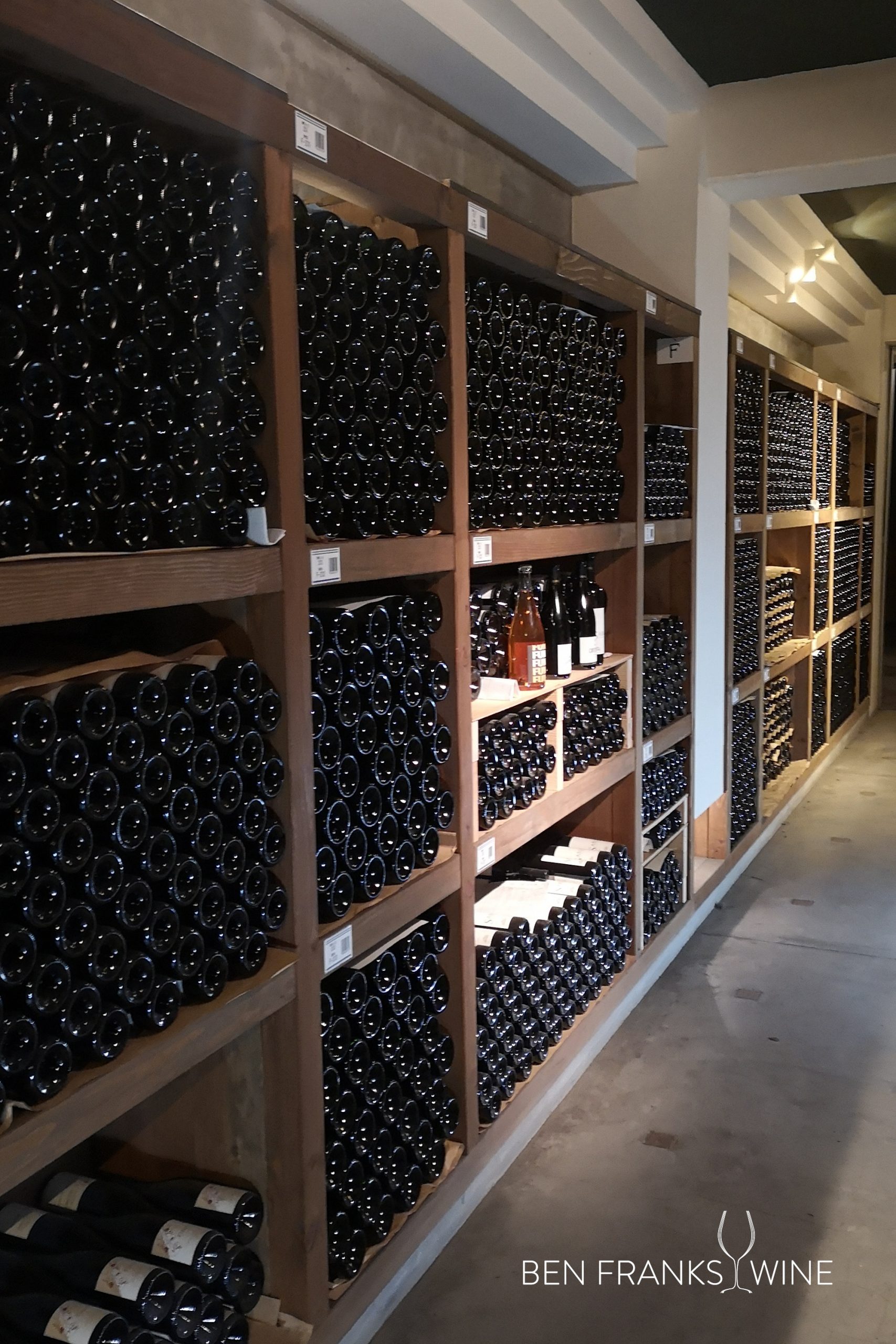
The Cave d’Occi cellars
Finding the market
One criticism of the few Japanese wines that do make it on to the UK market is price. Yet, when you consider the tiny scale of production for many wineries (the larger Yamanashi wineries notwithstanding), the viticultural challenges and the cost of equipment (all of which has to be imported), it is easy to see where the money is going. One interesting regulation, which Kakegawa-san highlighted, is that every winery must bottle their own wines on site; you cannot use an external bottling company, even if they carry out the bottling at your winery, as is common in Bordeaux. So, in addition to all the other costs, winemakers must invest in bottling equipment, too!
Given these challenges and the lack of a long-standing, traditional route-to-market, the marketing of the Niigata wines is as varied and experimental as the grape varieties the winemakers plant. Honda-san at Fermier sells many of his wines at independent shops around the country and also in a number of Tokyo’s finest restaurants. He believes that higher pricing (his El Mar Albarino retails online for ¥13,000, around £70), which undoubtedly reflects the quality of his wines, has also helped sommeliers and customers alike take his wines seriously as an accompaniment to haute cuisine.

The three lines from Cave d’Occi
Cave d’Occi has found several different approaches. Its relative size means that head winemaker Kakegawa can produce different lines aimed at different markets. He produces the quite traditionally labelled single-varietal bottlings, which he terms ‘the classics’, alongside a range of natural-wine-style bottles, with distinctive animal illustrations on the labels. These are his ‘jazz’ range, in which he riffs off different grapes and styles – a skin-contact Sauvignon Blanc pet-nat and a blanc de noirs Cabernet Sauvignon are two illustrative examples. These wines have had much success among the booming natural-wine audience in Japan.
Lastly, Kakegawa-san crafts a series of easy-going wines which have the rather brilliant name ‘Funpy’. He says these are his vins de soif which he makes for those who are new to wine – full of bright, intense fruit and refreshing on the palate – and retail for ¥2,200 (around £12). Interestingly, he makes the Funpy wines from local hybrid varieties grown for table grapes, as a way of showcasing how expressive these varieties can. Abe-san at Le Cinq also vinifies hybrids, such as Delaware and Muscat Bailey A, producing a great selection of immediately gratifying fresh-and-fruity wines. Hybrid varieties certainly have a mixed reputation when vinified, but these are good example of what can be achieved when winemakers have access to some of the finest table grapes in Japan.

A line-up from Le Cinq – the two hybrid-grape wines in the middle, the Chardonnay/Pinot Noir on the right
A further tantalising aspect of Cave d’Occi is the extraordinary quantity of old vintages they keep in the sprawling cellars below the shop and winery. Kakegawa-san says that no other winery in Japan is taking such an approach to ageing wines. He says the results so far are mixed, but that it is important that they age these bottles to show what can be done with serious Japanese wine and to create a market for these aged bottles.
However, the many delights of this region will, for now at least, remain somewhat hidden from an international audience. None of the wineries are currently exporting, beyond a few bottles on sale in Hong Kong, though Le Cinq may be exploring options soon. This is a shame, as there are a number cuvées that would likely find a ready audience in Japanese restaurants in London. Nevertheless, quantities of the wines are small, and the first task is to convince a sometimes-sceptical domestic audience about the quality of Japanese wine. Still, recognition undoubtedly grows and with such committed, enthusiastic winemakers producing unique wines of evident quality, Niigata Wine Coast is certain to be leading the charge.

